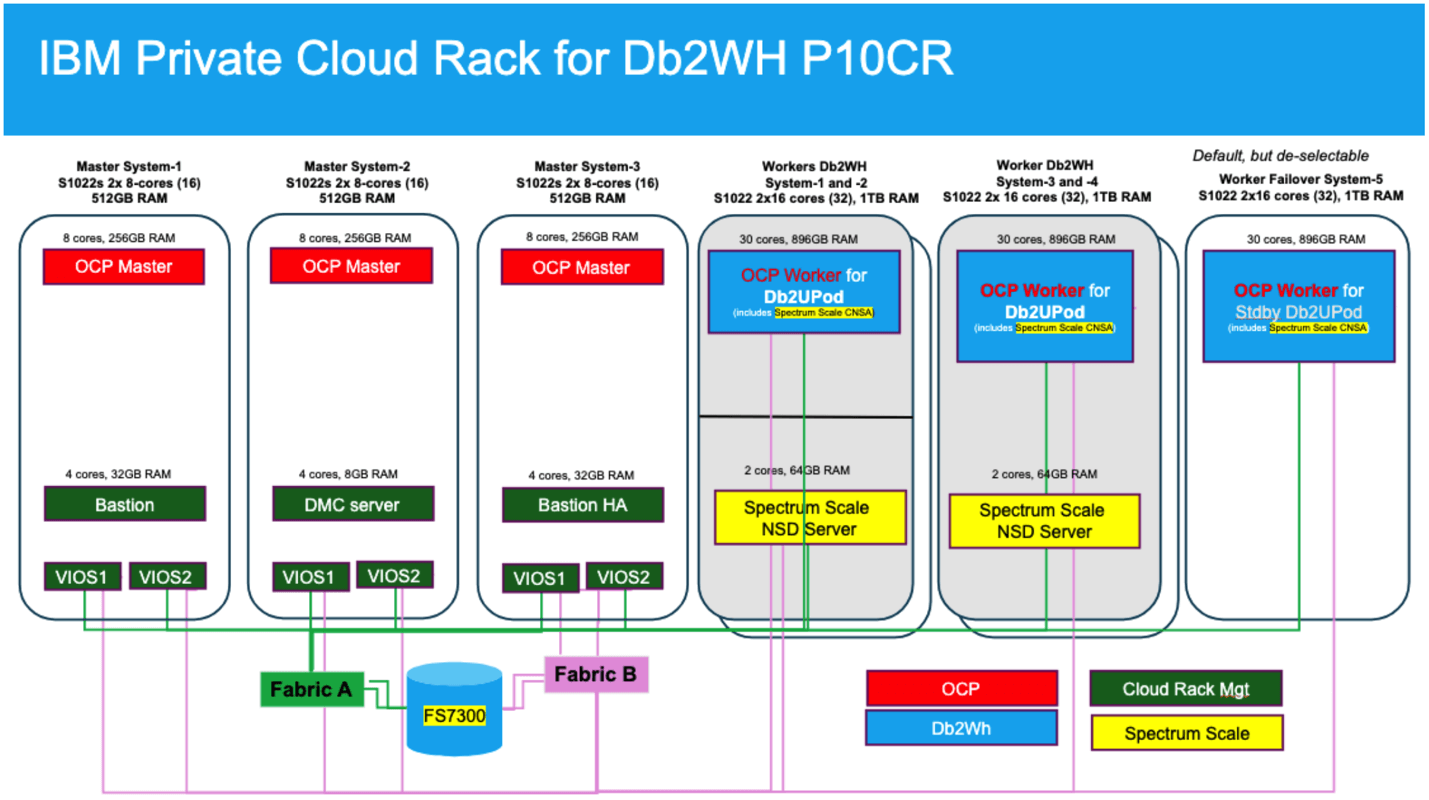IBM’s Power10 Private Cloud Rack Db2 Warehouse Solution: Architecture, Scalability, and Performance
By Aslam Nomani, Jana Wong and John Bell
IBM’s Power10 Private Cloud Rack for Db2 Warehouse (P10 PCR) Solution represents the next generation of the IBM Integrated Analytics System (IIAS), modernized to operate on the Red Hat OpenShift Container Platform. This architecture shift enables a more modular and scalable deployment model, aligning with modern cloud-native practices. IBM’s P10 PCR is designed to be deployed within customer data centers or any preferred location, providing operational flexibility while maintaining stringent performance and reliability standards through extensive pre-validations performed by IBM.
Hardware Architecture and Configuration
The P10 PCR is built on a robust hardware foundation, leveraging the IBM Power10 processor, which supports high levels of parallelism and workload scalability. The Power10 processor architecture is optimized for complex analytical computations, enabling efficient data processing and throughput. Paired with the IBM Storage FlashSystem 7300, the solution provides low-latency, high-performance storage to support demanding analytical workloads.
This hardware configuration supports a containerized environment, facilitating resource isolation and improved workload management. It also enables high availability and disaster recovery.
The base configuration for a P10 PCR for Db2 Warehouse solution includes the following components:
- 3x S1022s Power10 servers (Management nodes)
- 3x S1022 Power10 servers (2 Active Worker nodes + 1 Stand-by Worker Node for HA)
- 1x Power10 Hardware Management Console (HMC)
- 1x IBM 7316 Flat-panel console
- 1x IBM FlashSystem 7300 storage modules (with 16x9.6TB NVMe Flash Core Modules)
- 2x IBM 48x 1GbE + 2x 100Gb Ethernet switches
- 2x IBM SAN48B-7 SAN switches
Figure 1: P10 PCR Base Configuration
Compared to the previous generation IIAS/Sailfish architecture, the P10 PCR features enhanced memory, CPU, and network capacities, as illustrated in the image and table below.
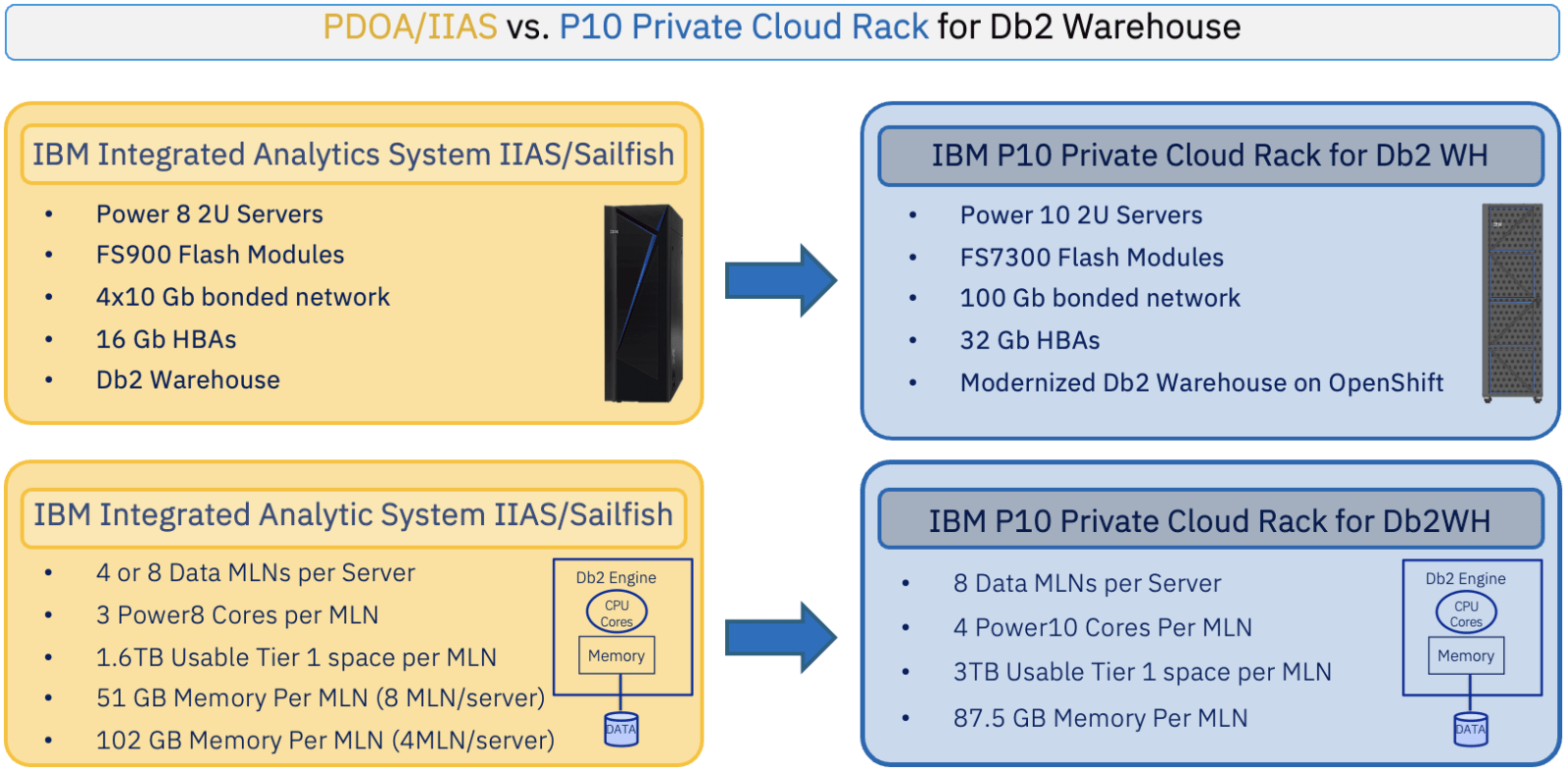
Figure 2: Basic Hardware Comparison of IIAS/Sailfish and P10 PCR
The following table provides a comprehensive overview of the System and Hardware configuration for the IIAS/Sailfish Full Rack and IBM’s P10 PCR Full Rack, also referred to as the Base Rack Large (BRL). The OCP and Db2 versions are up-to-date as of March 2025.
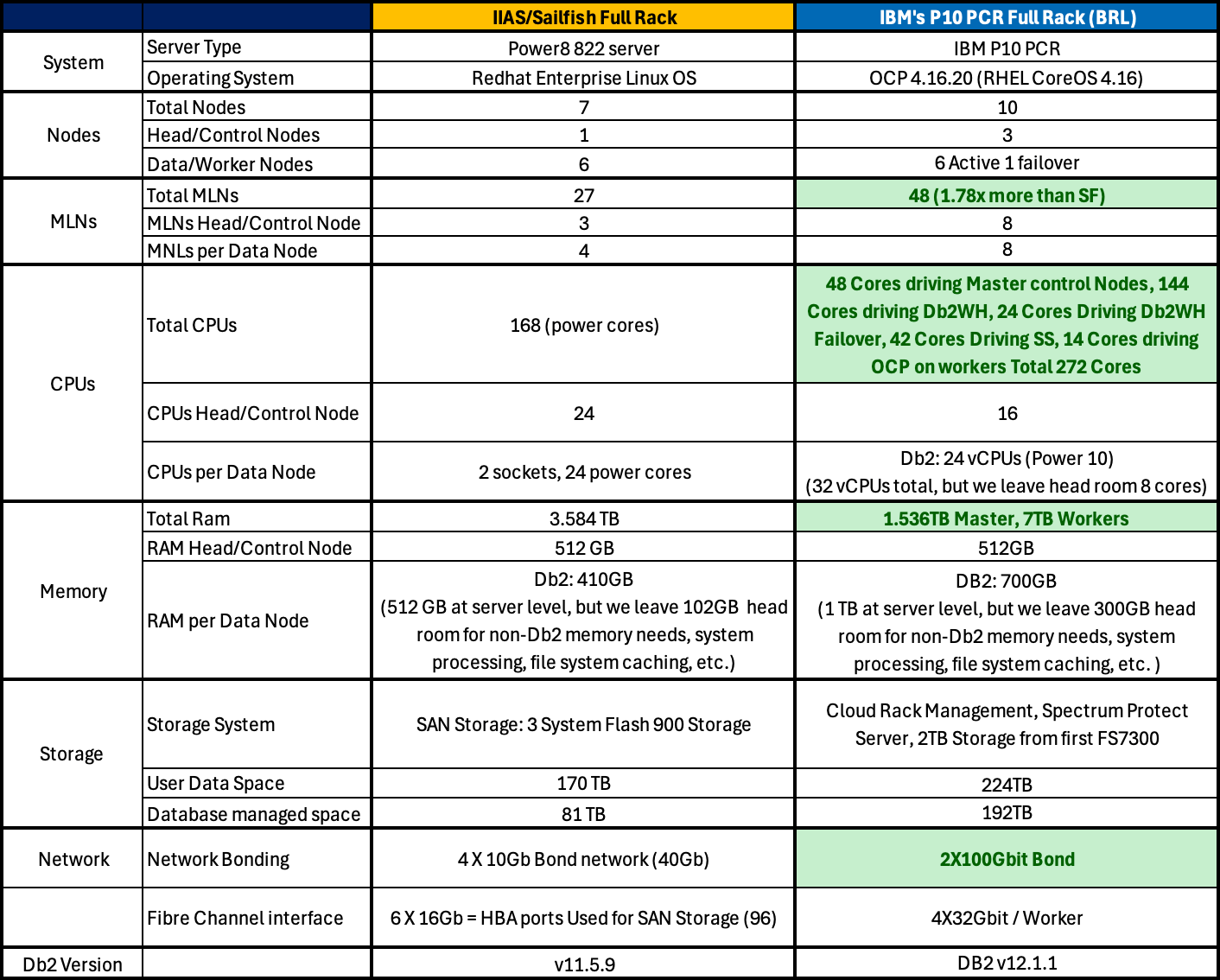
Table 1: System & Hardware Configuration of an IIAS/Sailfish Full Rack and IBM's P10 PCR BRL
Deployment and System Integration
IBM’s Power10 Private Cloud Rack is designed for efficient deployment with a configuration tailored to customer requirements. Before purchase, IBM conducts a modernization workshop to assess system needs and determine the appropriate configuration, ensuring that the deployed solution is appropriately sized without unnecessary complexity.
The P10 PCR offers significantly improved performance over the previous generation. The deployment process also includes data migration from the IBM Integrated Analytics System (IIAS), minimizing downtime and accelerating the transition to the new platform. The data migration can be performed leveraging IBM’s Db2 Bridge tool, which enables seamless data transfer between Db2 databases. IBM manages the entire deployment process, from initial assessment to production. For further details, refer to the official deployment guide.
Scalability and System Expansion
IBM’s P10 PCR is designed with inherent scalability to accommodate evolving workload requirements. The system supports dynamic resource scaling within a single rack or across multiple racks. This is facilitated through a modular architecture that maintains compute-to-storage affinity, preserving performance consistency as the infrastructure expands.
The system supports a flexible configuration, starting with a smaller configuration, such as 1/3 of a rack (Base Rack Small BRS), and gradually scale up to 2/3 of a rack (BRM), a full rack (BRL), or even multiple racks as needed. The architecture supports horizontal scaling across racks with near linear performance scalability, allowing for seamless infrastructure expansion to accommodate evolving workload demands and business needs.
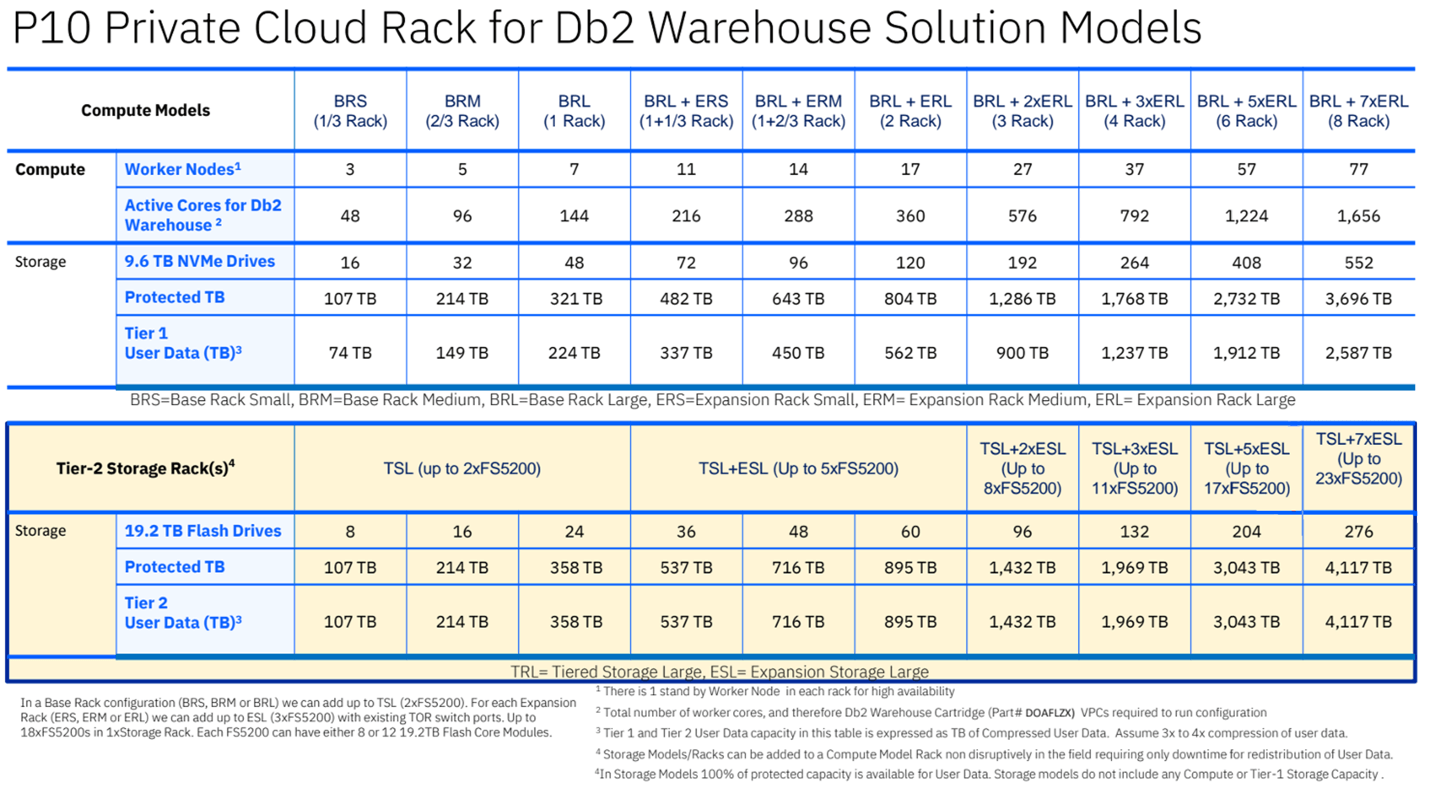
Figure 3: P10 PCR Solution Models
Security Architecture and Data Protection
IBM’s P10 PCR is architected with a comprehensive security model built on Red Hat OpenShift’s security framework. It includes:
- Network Security: Employs network policies to implement micro-segmentation, effectively isolating traffic between pods and services.
- Data Encryption: End-to-end encryption for data at rest and client-server communication
- Access Control: Role-based access control (RBAC) integrated with enterprise identity providers for unified authentication and authorization.
Data availability and integrity are maintained through a multi-layered protection strategy, including:
- RAID Configurations: Ensuring redundancy at the disk level.
- Snapshot Management: Snapshot backup and restore capability allowing nearly instantaneous backups and restores.
- High Availability: Built in high availability allows automatic failover for Db2 upon a failure.
- Disaster Recovery: Using IBM’s Active-Active Q Replication technology
These features align with industry compliance standards, including GDPR and CCPA, ensuring data security and regulatory compliance.
Performance Optimization and Benchmarking
A comprehensive performance study leveraging a 100TB BDI (Big Data Intelligence) workload was conducted to evaluate the capabilities of the P10 PCR Full Rack System (BRL) in comparison to the previous IIAS Sailfish Full Rack architecture. The findings revealed substantial performance enhancements across all workload scenarios, underscoring the superior efficiency of the P10 PCR system:
- Read Workload Performance: Achieved 2-2.5x faster processing for serial-style workloads and delivered an average of 4.3x higher query rate per hour throughput on multi-user workloads on P10 PCR.
- IUD Workload Performance: Demonstrated 4.1x faster insert and 1.8x faster update operations on P10 PCR.
- ET Unload Performance: Delivered 4.7x faster unloading speeds on P10 PCR compared to IIAS Sailfish.
- Backup Performance: Achieved 3.2x faster backup times on P10 PCR versus IIAS Sailfish.
These performance gains can be attributed to the increased memory capacity of the P10 PCR cluster, which supports a larger storage buffer pool. This enhancement significantly reduces the dependency on disk I/O operations, thereby minimizing CPU wait times and maximizing CPU utilization. These results highlight the P10 PCR system's capability to efficiently handle demanding big data workloads, delivering improved throughput and operational efficiency.
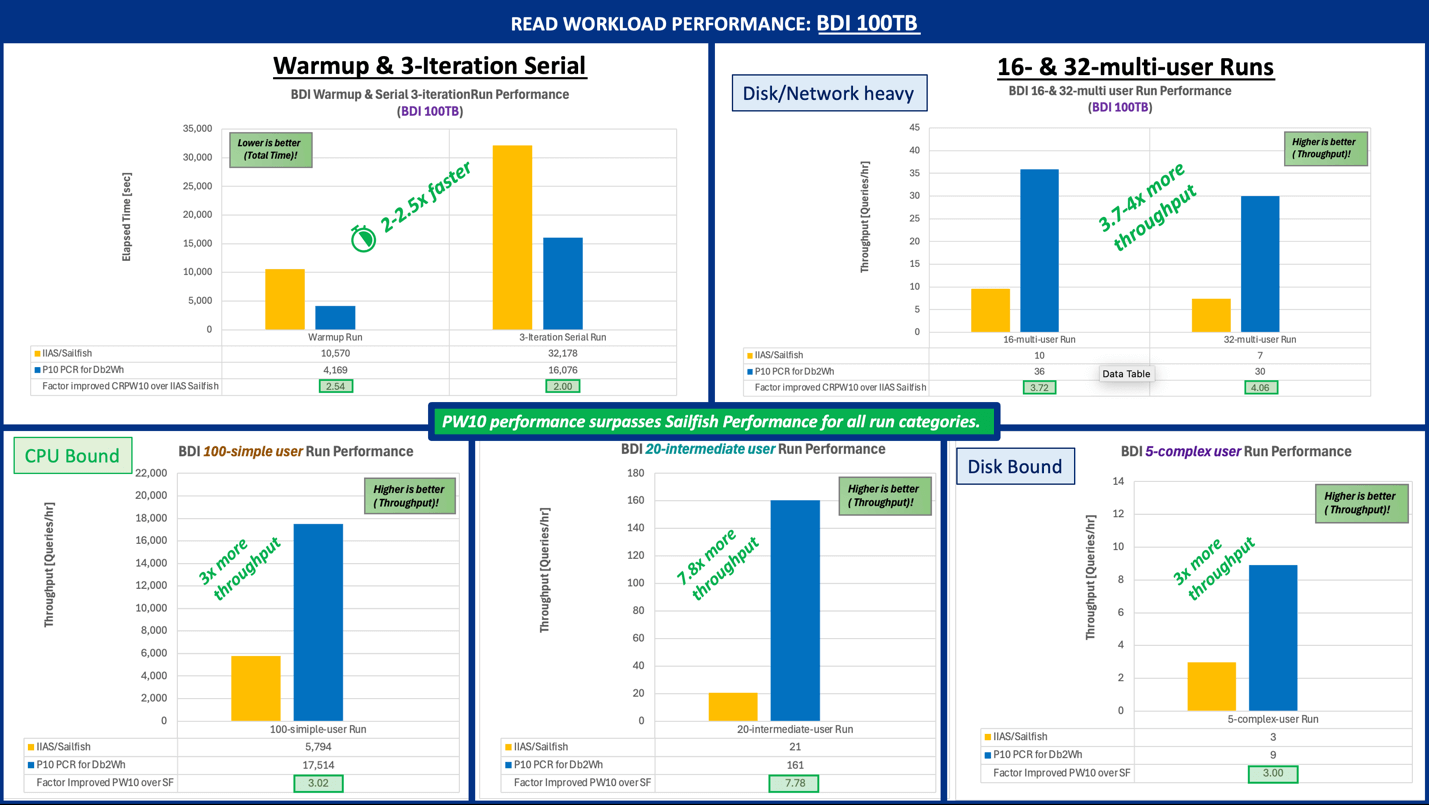
Figure 4: BDI 100TB Read Workload Performance on P10 PCR vs IIAS/Sailfish
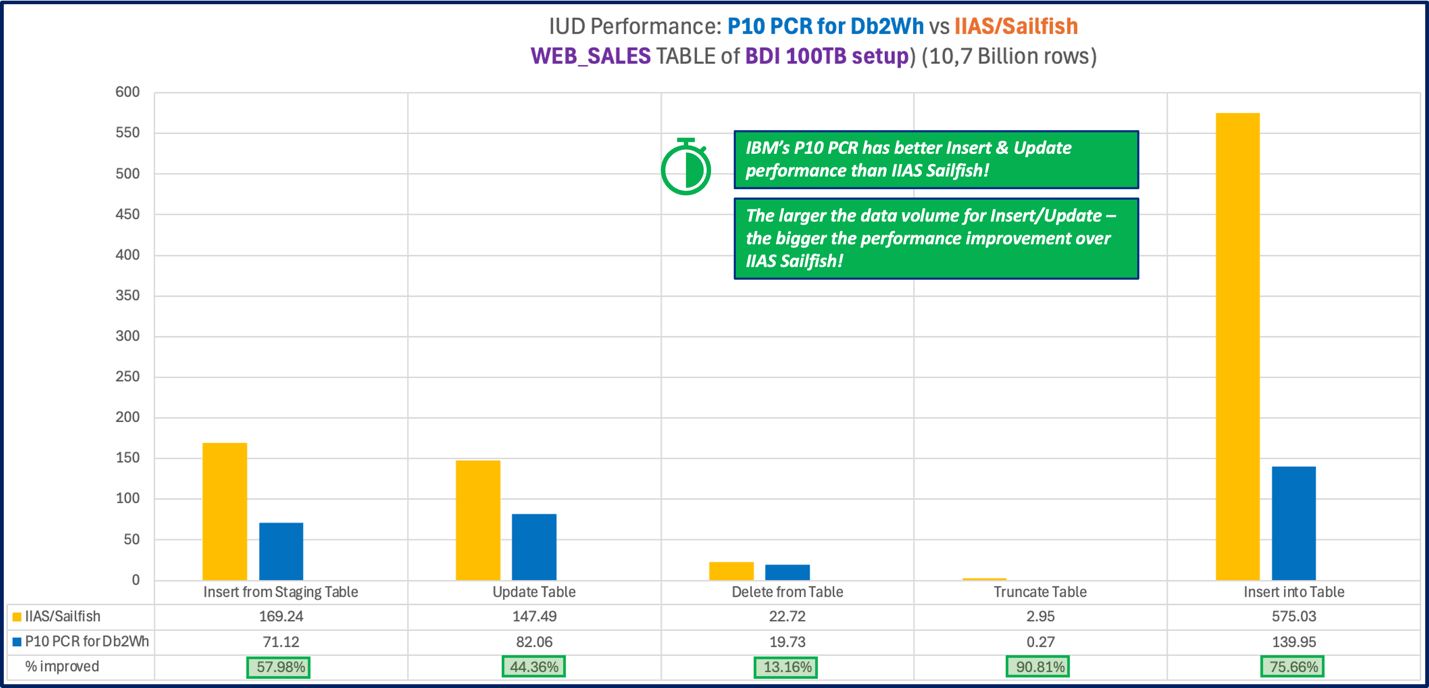
Figure 5: Write Workload Performance on P10 PCR vs IIAS/Sailfish
System Management and Monitoring
Db2 on IBM’s P10 PCR is managed through the Db2 Management Console (DMC), which allows for metric collection and visualization and provides a unified interface for:
- Performance Monitoring: Real-time and historical analysis of system metrics, including CPU, memory, and I/O utilization.
- Workload and Query Management
- Resource Management and Data Exploration
Software Lifecycle and Maintenance
IBM’s P10 PCR includes comprehensive lifecycle management for the entire software stack, including:
- Firmware Updates
- Container Platform Updates: OCP and Storage Scale updates
- Db2 Software Updates
Customers have the option to perform these updates independently or outsource these tasks to IBM or another third party.
Support and Maintenance Model
IBM’s P10 PCR features a unified support model, offering a single point of triage for all hardware and software components. This integrated support structure reduces complexity and accelerates issue resolution. The support team is equipped with deep knowledge of the P10 PCR architecture, ensuring efficient root cause analysis and resolution.
Conclusion
IBM’s Power10 Private Cloud Rack for Db2 Warehouse is designed to support high-performance, scalable data warehouse workloads. Its containerized architecture and advanced security features make it a robust choice for organizations requiring high availability, data integrity, and compliance.
The system's modular design and integrated management tools enable efficient resource scaling while maintaining performance consistency. Leveraging IBM Power10 processors and FlashSystem storage, the P10 PCR provides optimized compute and storage capabilities for enterprise data processing.
About the Authors
Aslam Nomani is a Senior Technical Staff Member and Senior Manager within the Db2 Development team. He currently leads a team focused on modernization and the exploitation of Generative AI. Aslam has been with the Db2 team in the IBM Toronto Lab for over 25 years and has a BSc in Computer Science and a BSc in Commerce. His focus areas in the past have been around Quality Assurance and delivering Continuously Available solutions. Aslam can be reached at aslam@ca.ibm.com
Jana Wong is the principal performance focal for Data Warehouse on-premise solutions at the IBM Silicon Valley Lab, with over 15 years of experience in Databases, SQL, QA, and Project Management. She holds a Master’s in Computer Science from the University of Rostock. Recently, she led the development and automation of a benchmark kit for validating IBM's Power10 Private Cloud Rack and played a key role in evaluating the performance of reference architectures such as IIAS/Sailfish and P10 PCR. Jana can be reached at jfitzge@us.ibm.com.
John Bell is a Distinguished Engineer and Data Warehouse Architect at IBM, with over 25 years of experience in data warehousing and analytics. He has played a pivotal role in developing IBM's data warehouse solutions, including IBM’s Power10 Private Cloud Rack reference architecture. He can be reached at john.bell@ibm.com.

